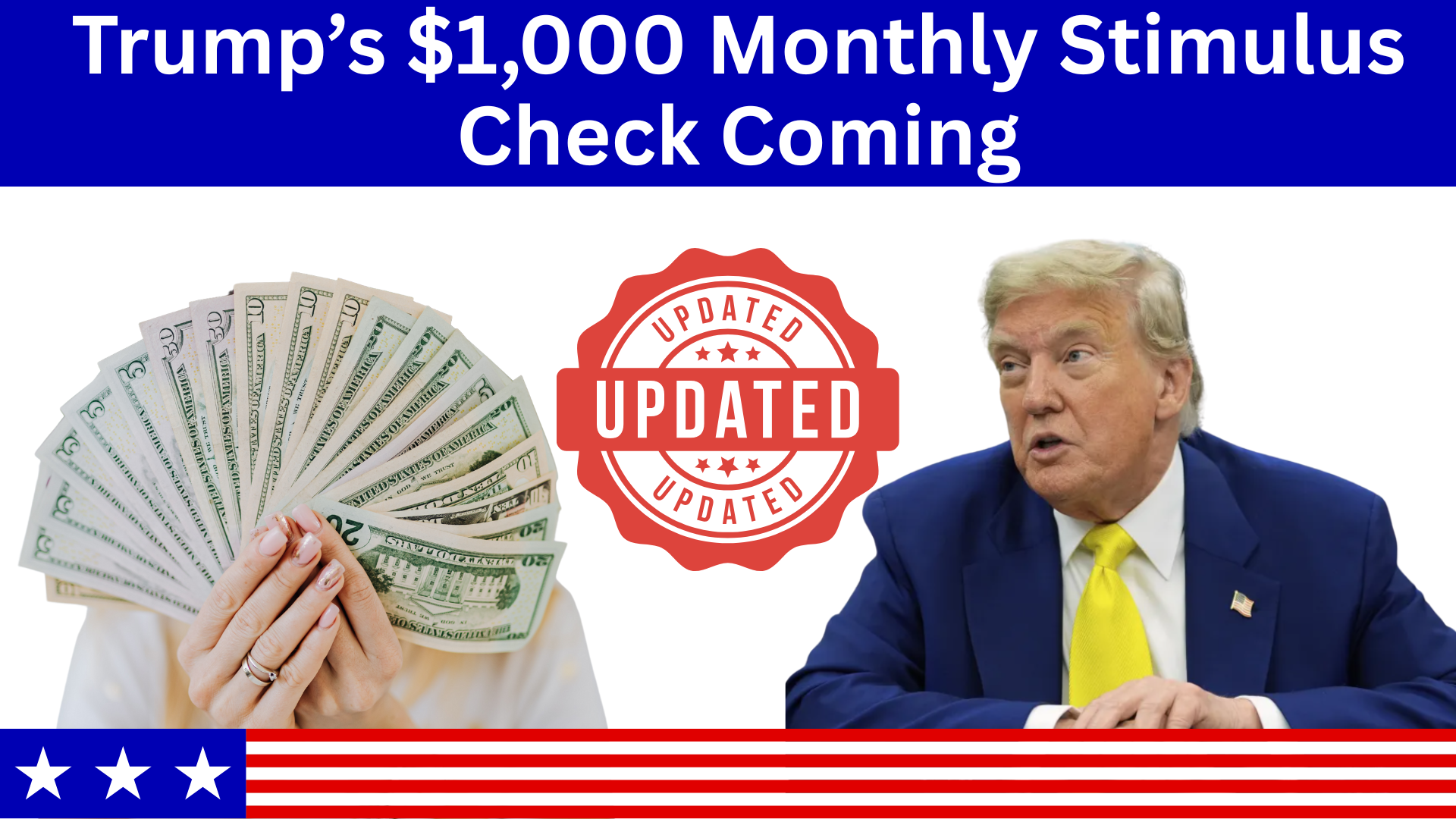A new proposal backed by former President Donald Trump is making headlines across the U.S.—a $1,000 monthly stimulus check aimed at struggling households. Here’s what we know so far about the Trump’s $1,000 Monthly Stimulus Check Coming in and how you might qualify.
Trump’s $1,000 Monthly Stimulus Check Coming
In a bold economic policy pitch ahead of the 2025 election season, Donald Trump has proposed a recurring $1,000 monthly stimulus payment for low- and middle-income Americans.
The plan, dubbed the “America First Family Relief Fund,” is aimed at countering inflation, boosting consumer spending, and supporting job-seeking citizens. If approved, this would be the largest recurring direct payment program since the pandemic-era stimulus checks. Here’s a full breakdown of who qualifies and how it would be claimed.
Who Qualifies for the $1,000 Stimulus?
The program, still awaiting congressional approval, outlines clear eligibility criteria. Based on current drafts, eligibility will depend on income, employment status, family size, and tax filings.

Here are the likely qualifying groups:
- Individuals earning less than $60,000 annually
- Couples earning under $120,000 annually
- Parents or guardians with dependent children under 18
- Unemployed individuals actively seeking work
- Those receiving Supplemental Nutrition Assistance Program (SNAP) or Medicaid
Non-citizens and individuals who owe back taxes or have unfiled returns from previous years may be excluded. Final guidelines will be confirmed if the program is passed through legislation.
How Will the Stimulus Be Distributed?
If enacted, the checks will be automatically deposited into the bank accounts of eligible recipients who are registered with the IRS through tax returns or federal aid programs.
Expected distribution method:
- Direct deposit (preferred method)
- Mailed checks for non-digital recipients
- Prepaid debit cards in certain low-income areas
Stimulus payments will be issued monthly, starting approximately 90 days after legislative approval.
Application Process and Portal Access
Unlike previous stimulus rounds, this proposal may involve an optional registration portal for non-filers, such as low-income seniors or unemployed adults who do not submit annual tax returns.
What applicants will need:
- Social Security Number (SSN)
- Latest tax return or IRS record
- Valid bank account for direct deposit
- Declaration of current income and employment status
The IRS is expected to launch a dedicated online portal similar to the “Get My Payment” tracker used during COVID-19 relief.
Duration and Total Benefit Value
We expect the proposed plan to run for 12 months, potentially reaching a total payout of $12,000 per qualified individual or household. Extensions could be considered depending on inflation trends or future economic emergencies.
| Status | Monthly Check | Total in 12 Months |
|---|---|---|
| Single Filer | $1,000 | $12,000 |
| Married Couple | $2,000 | $24,000 |
| With 2 Children | $3,000 | $36,000 |
These figures could change slightly based on final legislation, particularly if income caps or bonus payments for dependents are adjusted.
Why This $1,000 Monthly Stimulus Check Is Gaining Attention?
This proposal has gained significant media and public attention due to:
- Widespread economic uncertainty
- Rising housing and healthcare costs
- Election year populist appeal
Trump’s campaign has emphasized putting “real money in real families’ pockets,” positioning this as an economic lifeline for working-class America.
Whether you’re a family under pressure or an unemployed individual looking for stability, this potential $1,000 monthly check could offer much-needed financial relief. Stay informed and ready to act if this plan becomes law.